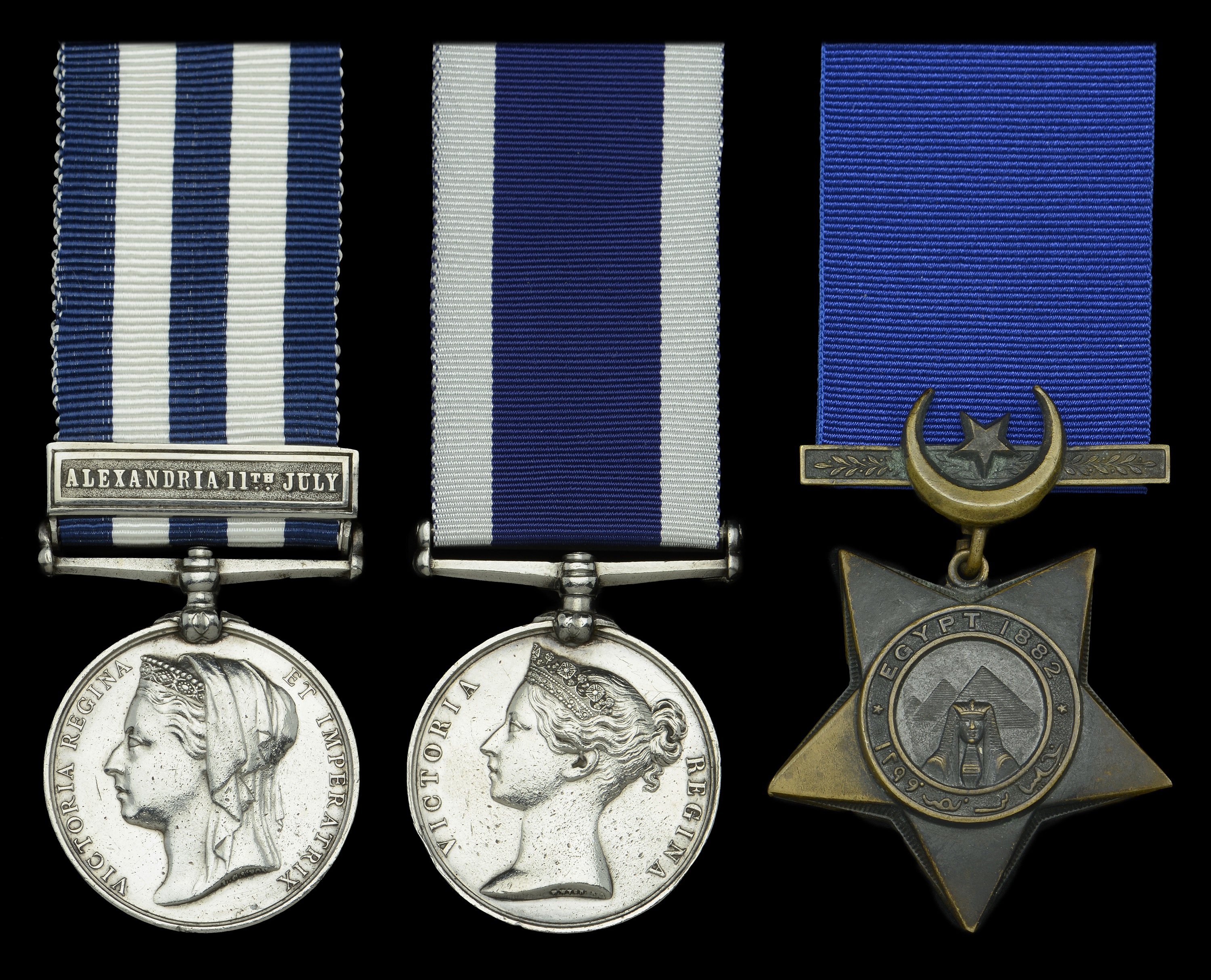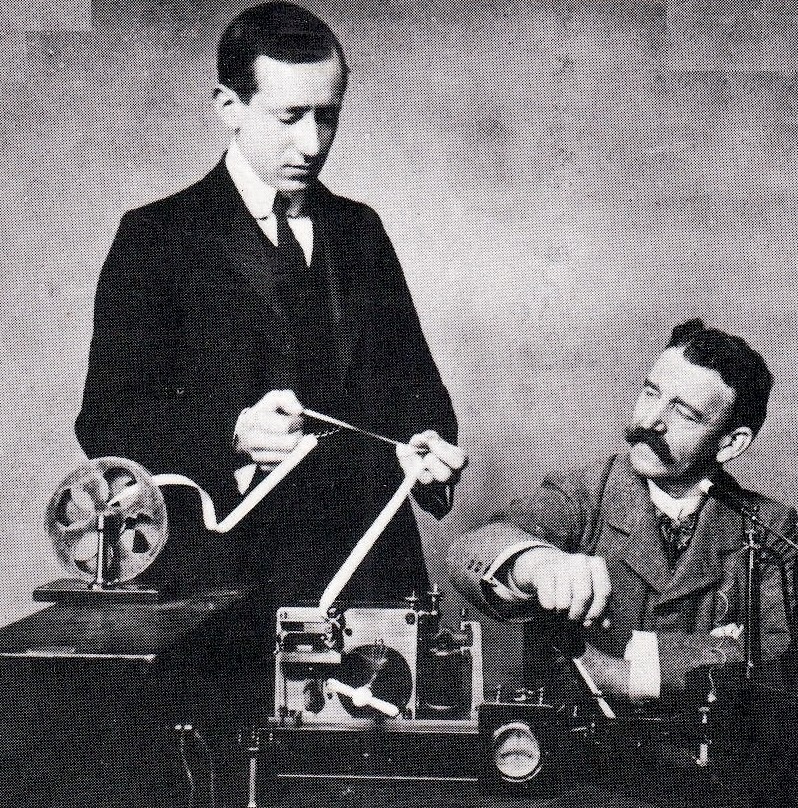Three: Torpedo Instructor G. S. Kemp, Royal Navy, who subsequently served as personal assistant to Guglielmo Marconi, and was present alongside Marconi on all his major experiments, including the first Transatlantic signal Egypt and Sudan 1882-89, dated reverse, 1 clasp, Alexandria 11th July (G. S. Kemp. Cox: Cutt: H.M.S. “Alexandra.”); Royal Navy L.S. & G.C., V.R., narrow suspension (G. S. Kemp, Torpo. Instr., H.M.[S.] Hecla) impressed naming; Khedive’s Star, dated 1882, unnamed as issued, contact marks from star, better than good fine, the LS&GC rare to rate (3) £600-£800 --- George Stephen Kemp was born in Minster, Kent, on 3 November 1857 and joined the Royal Navy as a Boy Second Class on 1 January 1873. He served in H.M.S. Alexandra from 12 March 1880 to 14 November 1882, being advanced Leading Seaman on 1 January 1882, and Petty Officer Second Class on 15 July 1882, and took part in the bombardment of Alexandria. Promoted Petty Officer First Class on 1 September 1884, and Chief Petty Officer on 23 May 1888, he was for many years a Torpedo Instructor, and was promoted Chief Torpedo Instructor in 1887. Shore pensioned on 11 November 1895, his record of service notes: ‘Has invented a method of communication over long distances by means of an ingenious adaptation of existing telegraph gear which is to be experimented on and carried out in H.M.S. Vernon.’ Appointed to the engineering staff of the Post Office, Kemp first met Guglielmo Marconi on 27 July 1896. The story of this encounted is told by Degna Marconi in her book ‘My Father, Marconi’: ‘My father told me that he set up one of his first demonstrations on the roof of the Post Office in St Martin's-le-Grand where he planned to signal to the Savings Bank Department on Queen Victoria Street. When he looked over the ornate stone balustrade, he saw a red-headed fellow watching him curiously. The man on the pavement caught my father's eye and shouted up, “What are you doing there?”Marconi called back, “Come on up and I'll show you.” The onlooker arrived on the roof with such remarkable promptitude that my father believed he had scrambled up the drain (I sincerely hope not, for the Post Office is a towering eight storeys high). The moment George Kemp reached the rooftop he went to work for Marconi and continued to work for him forever after.’ ‘In this manner Kemp, an ex-Naval Petty Officer, became Marconi's first personal assistant. As such he sailed to Newfoundland with him on the epic transatlantic experiment and shared in the triumphs and disappointments which led ultimately to a successful commercial trans-ocean service. All Marconi's subsequent personal assistants displayed great devotion to him, but none more intensely than Kemp, whose activity in implementing the experiments proposed by his leader was tireless. At his death he left a valuable legacy behind him in the form of twenty-one volumes of the day-to-day journal that he kept until his death. It is to the existence of these that the Company is indebted for much of the detail of its early history.’ (A History of the Marconi Company, by W. J. Baker refers). Kemp died in 1933. His diaries, referred to above, are held as part of the Marconi Archive at the Bodleian Library, Oxford. Sold with a First Day Cover (13 September 1972) commemorating the 75th Anniversary of the first wireless transmission across water, the photograph depicting both Marconi and Kemp; a copy of ‘A History of the Marconi Company’, by W. J. Baker, the cover of which features the same photograph; and copied record of service and medal roll extract.
Auctioneer's Buyers Premium: 24% (+VAT)
There is an additional charge of 4.95% (+VAT/sales tax)
Vollständige AGBs









